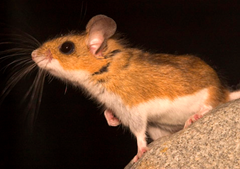Small mammals – and rest of food chain – at greater risk from global warming than thought
The balance of biodiversity within North American small-mammal communities is so out of whack from the last episode of global warming about 12,000 years ago that the current climate change could push them past a tipping point, with repercussions up and down the food chain, say Stanford biologists. The evidence lies in fossils spanning the last 20,000 years that the researchers excavated from a cave in Northern California. What they found is that although the small mammals in the area suffered no extinctions as a result of the warming that occurred at the end of the Pleistocene epoch, populations of most species nonetheless experienced a significant loss of numbers while one highly adaptable species – the deer mouse – thrived on the disruptions to the environment triggered by the changing climate. “If we only focus on extinction, we are not getting the whole story,” said Jessica Blois, lead author of a paper detailing the study to be published online by Nature on May 23. “There was a 30 percent decline in biodiversity due to other types of changes in the small-mammal community.” The double whammy of late Pleistocene warming, coupled with the coinciding arrival of humans on the North American continent, took a well-documented heavy toll on the large animals. Almost a third of the big, so-called “charismatic” animals – the ones with the most popular appeal for humans, such as mammoths and mastodons, dire wolves and short-faced bears – went extinct. But until now, little had been done to explore the effects of that climate shift on smaller fauna. “We were interested in the small animals because we wanted to know about the response of the survivors, the communities of animals that are still on the landscape with us today,” said Elizabeth Hadly, professor of biology and a coauthor of the paper. “We focused not only on the Pleistocene transition, but also the last 10,000 or so years since then.” Blois and Hadly excavated deposits in Samwell Cave, in the southern Cascades foothills. They also sampled the modern small-mammal community by doing some live trapping in the area of the cave. Blois was a graduate student in biology when they did the work and Hadly her adviser. Radiocarbon dating of the samples was done by Jenny McGuire, a graduate student at the University of California-Berkeley. The biggest change they saw in the fossil deposits was the manner in which different small-animal species were spread across the landscape. “In the Pleistocene, there were about as many gophers as there were voles as there were deer mice,” Hadly said. “But as you move into the warming event, there is a really rapid reduction in how evenly these animals are distributed.” …
Small mammals — and rest of food chain — at greater risk from global warming than thought
